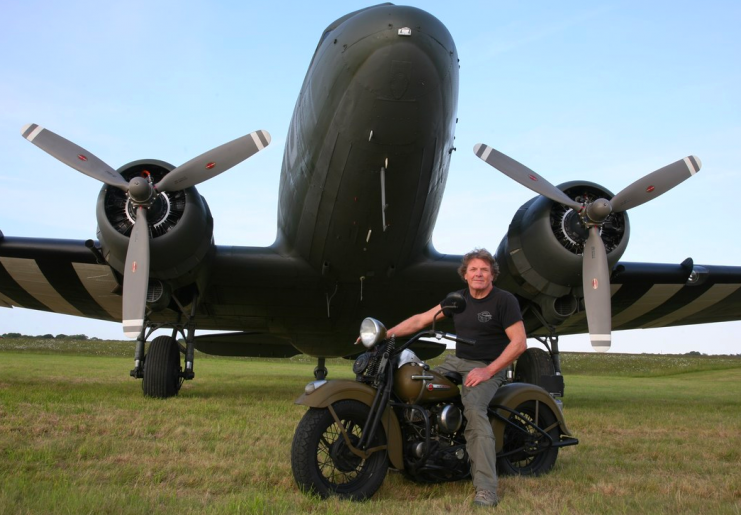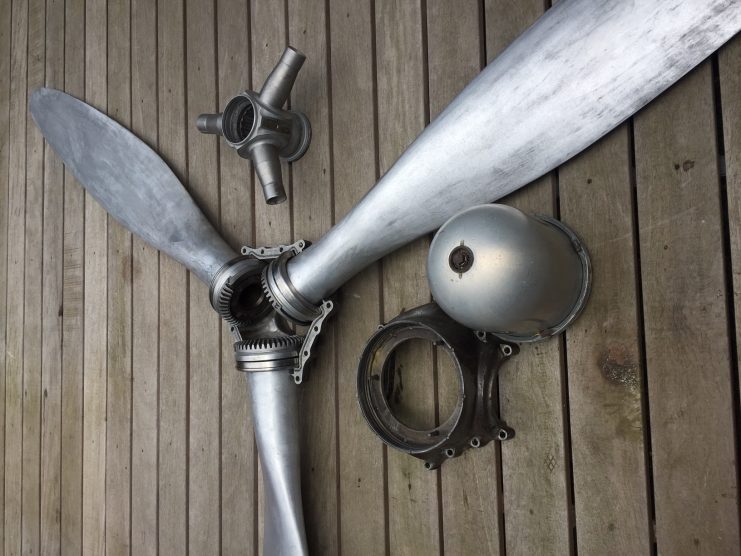The largest fleet of flying Douglas DC-3/ C-47/ Dakotas ever seen since the 1950s is now steadily building up in Duxford, Cambridge, UK.
In the first week of June, this fleet and more Daks will gather in Caen, Normandy, France for the 75th anniversary of D-Day, June 6th, 1944.
That day marked the start of Operation Overlord, the massive invasion of the Normandy Beaches with nearly 160,000 Allied troops crossing the English Channel on that single day.
This year, we are going to witness an awesome event with an unparalleled magnitude of more than 30 flying C-47s/ DC-3s/ Dakotas from the USA, Canada, and Europe.
I have visited the D-Day event every year since 2004 and seen dozens of Air Shows, but I have never seen such a huge fleet and surely, will never see that again. For more details, see www.daksovernormandy.com
I have flown in Dakotas since the late 1940s as a young kid. Later in my eventful life, I hunted and encountered that aircraft in the most remote places of the World, from the tundras of Alaska and the Yukon to the Amazon Jungle, from Madagascar and Phuket to the Caribbean Islands. (For more about that, please read my book The Dakota Hunter, for sale at Amazon, see final photo)
It is by itself a God Gift that this aircraft could survive the struggle against age-related mechanical decay and the stunning progress in aviation technology over the past 75 years.
DC-3s/ C-47s/ Dakotas are still operational in numbers and even make money with their flights, not only in the remote outbacks of the South American Jungle but even in places in the USA and Canada, be it more and more with the Turbo-Prop upgraded version of the C-47.

Talking about Props, the original Propeller for the radial aero-engine Pratt & Whitney R-1830, (mounted on the Military C-47 versions) was one of the Magic Tech Innovations, that made the Douglas DC concept so groundbreaking from the early 1930s.
https://www.youtube.com/watch?v=S1VeYOinvMI
Retractable main wheels, variable pitch Props, a very advanced streamlining/low-drag design (with wind-tunnel testing applied), all-metal wings & fuselage with superior strength, new riveting techniques of aluminum plating.
From all those ingredients, the Douglas Design Team brewed the best flying machine ever made until that year 1935 and arguably, the most legendary aircraft in Aviation History with the best commercial longevity of any mechanized transport that exists in the world. There is no train, truck, ship or plane at 75 years of age in the world, that still can earn money for the boss with cargo. And they still exist in numbers, more than the Museum supported one-of-a kind Steam locomotive.
After the introduction of the DC-3 in 1936, the model was soon converted for the Military into a Cargo Plane, named the C-47, the best and most-built Cargo and Paratrooper Transport Plane of WWII (over 10,000 were built in the USA).
Its career carried on during the Korean conflict (1950-1953) and even during the Vietnam Wars (ending in 1975), where the C-47 soldiered on as a paratrooper/ ambulance ship for the French Army and later as an Electronic Intel platform and as a Gunship, the Spooky AC-47.

In Normandy, during Operation Overlord, the C-47 was the Paramount Paratrooper Dropping aircraft, that also acted as a Glider tow ship. See the figures here, they are most impressive:
13,100 American paratroopers of the 82nd and 101st Airborne Divisions made night parachute drops early on D-Day, June 6, followed by 3,937 glider troops flown in by daylight.
On top, 7,900 British Paratroopers were dropped on that first night, early June 6th,1944 while another 360 Allied Pathfinders were dropped.
That makes a total number of well over 21,000 Paratroopers plus the almost 4,000 Glider troops.
A Grand Total of 25,000 airborne troops were transported during that single D-Day by 832 Douglas C-47s, making an average of 25 Paratroopers per aircraft.

Let’s take a look at that Variable Pitch Prop. It is simple technology by now, but the idea of a Prop that can vary its pitch (the angle of attack of its blades) during the flight was a marvel that made a way more efficient propulsion in the varying flight conditions between takeoffs and cruise flights.
That maximum efficiency throughout the flight regime was a great gain over the fixed-pitch propeller.
Ignoring all details of the Constant-Speed Prop advantages, there is also a safety edge. In case of an engine that quits, the Variable Pitch Prop can be fully feathered, i.e. pitched to ‘neutral’ so that there will be no wind milling of the non-driven prop because the blades can be rotated parallel to the airflow.
That situation reduces the huge drag and yawn caused by a ‘dead’ prop, yielding more safety-margin by keeping a fully loaded aircraft well above stall speed on a single-engine flight.
The innards of the Prop are displayed here.

The Blades are put in between two big steel barrels (clamp-like front and rear barrels) but can still be rotated over their axis once caught in the barrels, Due to the rings and the curved ‘cuffs’ on the Prop blade’s end inside the clamps, the blade is blocked from exiting once the 2 barrels are tightened together with 12 bolts.
Inside the cupola (that hemispherical hubcap or dome shell on the photo), there is a cam and piston system that hydraulically operates.
They drive the teeth at the Blade’s end in order to rotate them all simultaneously into more or less pitch (normally between 20-60 degrees max for pre-war props, in later models, the fully reversible Prop became the standard).
The pitch control is executed by the “governor” and is set for best performance of the aircraft related to its engine thrust.
This DC-3 Prop was made by Hamilton Standard and the same model was used on different aircraft with the same engine P & W R-1830 (also on the PBY Catalina) and the Prop was used with other engines (as the Wright R-1820 radial.
It also powered certain versions of the DC-3, and the Boeing B-17 Flying Fortress), It is arguably the most built Prop that emerged from WWII.
I’ll bring one such Hamilton Standard Prop set with me, It will be displayed in Duxford and Caen during the Daks Over Normandy activities between 3 and 9 June 2019 in the Delware sales stand.
For sale for static display and she can be supplied with a wall-anchor plate, optionally in bare metal, in matt black or mirror-polished finish.

A pilot’s nightmare, a Runaway Prop or Blade.
Seen here is the devastating effect of a runaway prop, that slammed into the cockpit of a PBY-5A Catalina and totally destroyed the roof and more inside!.
The crew is still smiling, so I assume that they were extremely lucky to have survived that invading Guillotine knife of some 300 lbs that was catapulted their way and ended right behind the Captain’s seat.
Such dramatic photo, only available from a Catalina (This photo was taken from my new book “80 Years, a tribute to the PBY Catalina”)
A prop that makes 1,000 rpm with 3 blades (each one at some 80 lbs), you can imagine the tremendous centrifugal forces that apply. The Blades desperately want to escape but are held in place by their cuffs, settled inside the barrels.
If one of the clamps or cuffs fail, a blade or the prop-set can break loose from the shaft or hub and will fly away with an outrageous force, The Prop can fly out over the full 360 degrees, so the odds that the escaping prop/blade will hit the cockpit are relatively small.
Well, those pilots can tell you about the odds, they survived the most harrowing story of a Prop that broke loose. The darker side of a genius instrument developed from the age-old windmill concept.
A number of 1664 Hamilton Standard Propellers, mounted on 832 Douglas C-47s brought 25.000 airborne troops over to Normandy on D-Day 1944, now 75 years ago.
Meet the Plane and the Prop that achieved the Normandy Para Drop, follow my Dakota Hunter Blogs over the coming weeks, with more facts and stories about the flight of the biggest fleet of C-47s/ DC-3s since the 1950s.
For more stories, 5-Star reviews, and photos about my books and blogs come to my sites, also for ordering:
www.dc3dakotahunter.com / www.catalinabook.com

Another Story From Us: Germany’s Mega Structures: A Berlin Flak Tower Through the Eyes of a Soldier
And you can buy Wiesman’s books below
The Dakota Hunter: In Search of the Legendary DC-3 on the Last Frontiers
